The U.S. Bureau of Labor Statistics announced a short while back that US national unemployment rate was 3.8% in August and September, versus the lows of 3.4% witnessed in both January and April 2023. On the surface, the employment situation looks healthy. Against the backdrop of virtually every leading indicator warning of recession (for quite some time now we must add), employment appears to be “the last man standing”:
The national unemployment rate in the United States is skewed by a few large, populous states with robust economies, which is why we are already in recession by the time these states roll-over and we witness national unemployment aggregates suddenly rise. One of the ways to avoid this and get a better “under the hood” view of unemployment is to inspect all 50 U.S state unemployment data. With many more less populous states with more vulnerable (or cyclically sensitive) economies now with equal weightings, we usually witness employment weakness a lot earlier in the cycle as depicted below:
The chart above shows that whilst the simple average of all the individual states’ unemployment rates continues to plumb to new lows, the percentage of US states with increasing month-on-month unemployment has risen for a fifth month in a row and now sits at 50% (some 25 states.) Whilst we only show data since 2005, this metric has been very effective since the 1970’s to get a much earlier heads-up of impending problems in the labor market and hence the economy which is 60% reliant on consumer spending.
With national unemployment averages being coincident at best, lagging at worst, another approach is to look at cyclically sensitive labor components that traditionally deteriorate up to eight months before the labor market national averages. Things that come to mind are tried-and-tested stalwarts such as manufacturing employment (hires, weekly hours & weekly overtime hours), job openings, quits, part-time employment, initial claims, permanent job losses and temporary help services.
Our Cyclical US Labor Market Composite (US-CSLMI) we publish at the beginning of each month for subscribers combines these all together and is shown below, where we can see it is clearly warning of a rise in unemployment for 13 months now – roughly the length of time of the warnings it gave in the 2020 Covid “flash” recession, the 2008 Global Financial Crises, and the 1990’s Gulf War recession.
👉We also see from the above chart that unemployment only needs to exceed 3.9% for its rise from the 3.4% lows to peek above the 0.5% red dotted line threshold which has historically always signaled the start or that we are already in recession. Something else we note from the movement of our Leading Labor Market Index is that it has a median lead-time to recession of 9 months, with a 4 month standard deviation. Given that it has already been camped “below water” in recession territory for 13 months, we can deduce a guestimate start date for recession between May 2023 and September 2023.
INCREDIBLE OFFER : Get 50% discount off our annual PRO Subscription, PLUS order before 15 December and get a second year completely FREE. Get your discount HERE
We have three methods to deduce the probability that we are about to witness a rise in unemployment exceeding 0.5% (and hence a recession).
The first method examines the long-term historical movement of the Leading Labor Index in the lead up to prior recessions and compares that to the current movement. This is called a imputed statistical probability model and appears below:
The second method examines the percentage of eight components that constitute the Leading Labor Market Index that are themselves in recession territory. This is commonly called a Diffusion and is shown below:
The third method is to merely combine the first two methods into an arithmetic average – providing an imputed (we like to call it an “assessed”) probability that is taking both the movement of the composite indicator and its underlying components into consideration:
At this time, due to every conceivable leading indicator with long-term track records warning of a U.S recession, we are making the case for a recessionary-induced bear market in US stocks. This is aptly shown in the DASHBOARD>RFD tab (see research note):
The question that requires answering, is if the 13th October 2022 lows, where the SP500 contracted 27% peak-to-trough over 195 sessions since 4 January 2022, constituted those lows. The table below, available in the DASHBOARD>NEWBULL tab, tracks the common historical signposts of recessionary-induced bear-market bottoms (troughs) in US stocks. For now, we assume the October 2022 stock market lows are a candidate for a recessionary-induced bear market trough:
We see that a small percentage (28.6%) of the traditional pre-trough signposts, which are heavily weighted to macro-economic data, occurred, whilst a much larger percentage (up to 66%) of the traditional post-trough signposts, mostly technical analysis related, occurred.
INCREDIBLE OFFER : Get 50% discount off our annual PRO Subscription, PLUS order before 15 December and get a second year completely FREE. Get your discount HERE
Explaining a delayed recession.
Below is a summary available from the bottom of the DASHBOARD>NBER PROBS tab, which examines 7 of our mainstream leading macro-economic models in relation to their historical mean lead-times to recessions, +/- one standard deviation of these means and the longest witnessed lead and their imputed target dates for U.S recession derived from how long the models have already been in recession territory. On aggregate they suggest a mean of March 2023, with a +1 standard deviation to September 2023 and a worst case Jan 2024. While these suggest a longer than expected lead-time in the appearance of the current expected recession (which has yet to be declared by NBER by the way) they are by no means a statistical anomaly.
Nonetheless, it would be fair to say that this recession is taking longer than usual to manifest in relation to that suggested by the leading economic data.
One theory that explains the absence of traditional recessionary pre-trough macroeconomic signposts, and the robustness of labor data in the face of overwhelmingly bearish leading macro data, hints at extreme excesses (or buffers) built up in the economy through:
- Massive post-Covid stimulus
- Lockdown-induced consumer spending pullbacks (or savings)
- Unprecedented near-zero interest rate environment.
Pandemic-related fiscal support resulted in a sizable increase in disposable income in the overall U.S. economy at a time when health-related economic closures and social distancing led to a significant drop in household spending. As a result, aggregate personal savings rose to $2.1 trillion – far beyond its pre-pandemic trend and much higher than in previous recessions, with Americans currently having nearly $190 billion in excess savings built-up during the pandemic still available. Despite recent large drawdowns of those funds, estimates suggest a substantial stock of excess savings remains in the aggregate economy to prop up spending and hiring to 4th quarter 2023.
As the theory goes, this massive “buffer” has to be whittled away through the current inflationary and monetary policy tightening period before being depleted enough to finally usher in a recession. It explains why this recession is taking so much longer to manifest in employment data after all the long-leading data turned bearish. Excess savings are being spent, which keeps consumer spending (60% of US economy) robust. This naturally leads to continued company profits and continued robust hiring and employment data. But once these excess savings become depleted, spending dries up, profits drop, hiring slows and employment eventually will contract.
This dynamic in excess savings associated with the pandemic period is remarkably unlike any past recessions. The chart below plots the monthly accumulation of excess savings since the onset of past recessions. Data on household assets and checking account balances support the view that households across the income distribution generally have considerably more liquid funds at their disposal compared with the pre-pandemic period:
If this theory plays out as suggested, namely excess savings depleted, then less consumer spending (60% of economy), then less corporate profits, then less hiring – then a recession has been merely delayed but is inevitable and the traditional pre-trough signposts will ultimately start to manifest as a result. This is likely to put pressure on the stock market and could potentially introduce even lower lows than the ones witnessed in October 2022.
There are several methodologies that attempt to capture the extent of Excess savings, its depletion rate and how much is left, with the latter ranging from $190Bn to $500Bn, so one cannot expect an exact science to inform us when it will be depleted or when the economy will slow as a result. All we can assume is that it explains the delayed recession and eventually it will be depleted and the repeal of the business cycle may come to an end. Until then our Cyclically Sensitive Labor Market Index is probably the most important report to watch each month.
INCREDIBLE OFFER : Get 50% discount off our annual PRO Subscription, PLUS order before 15 December and get a second year completely FREE. Get your discount HERE
Our economic research and stock market models are trusted by top Global & US Investment Firms:

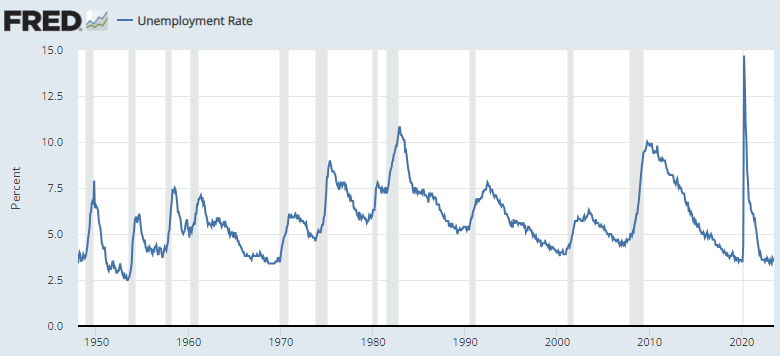
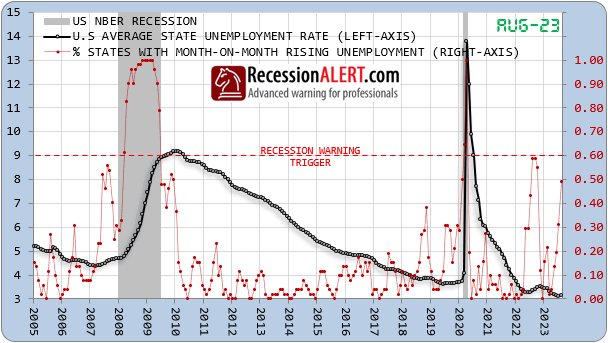
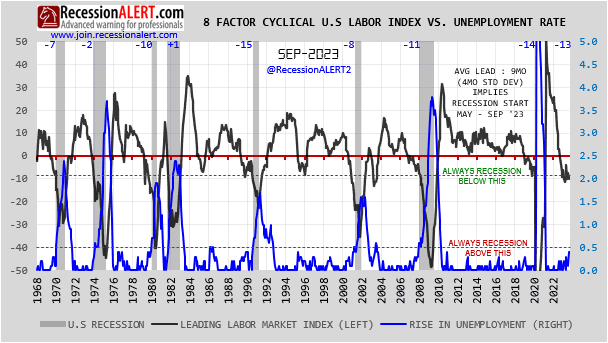
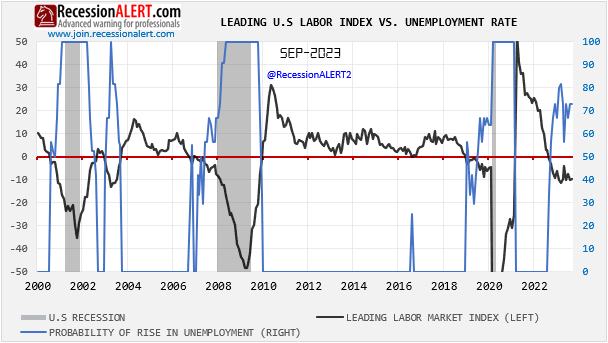
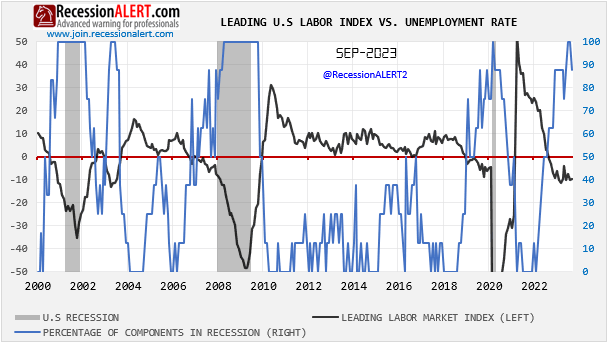
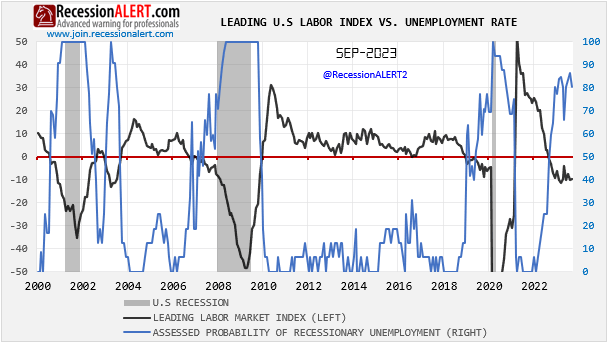
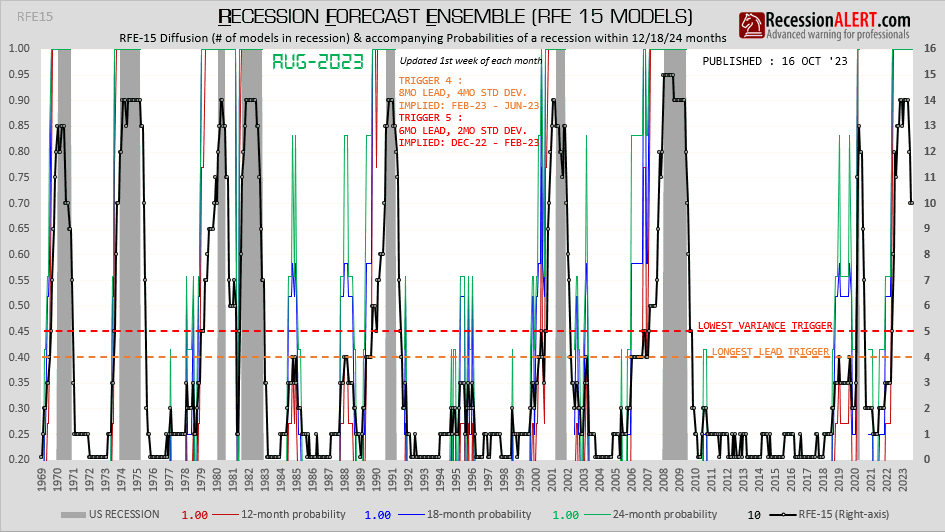
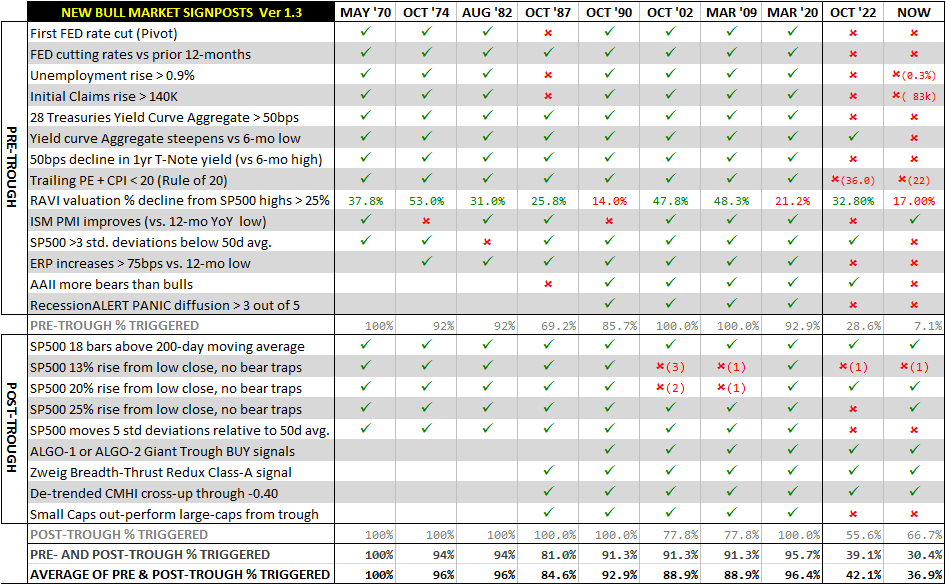

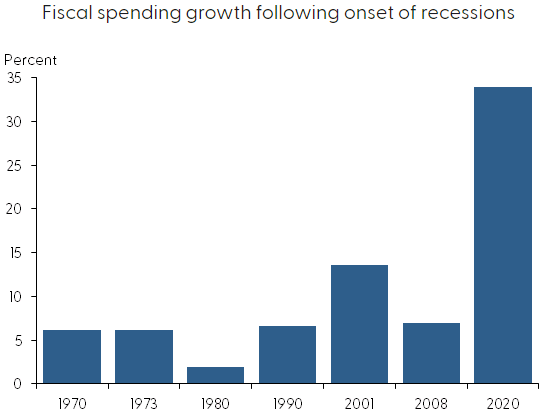
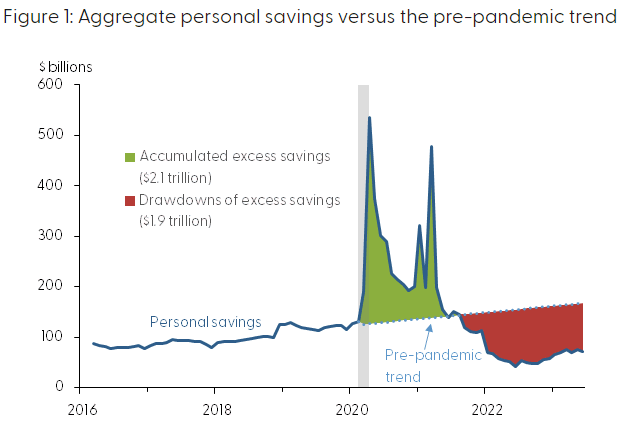
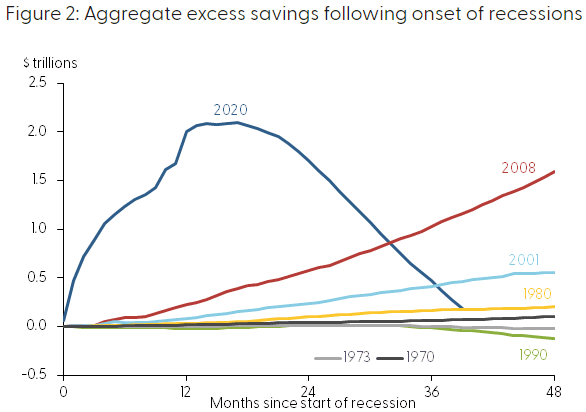

Comments are closed.